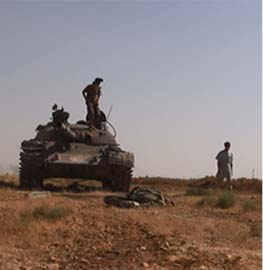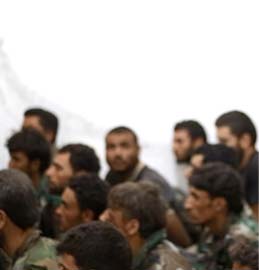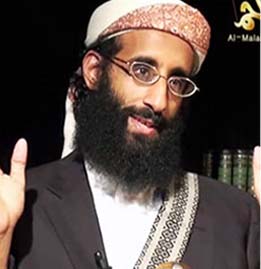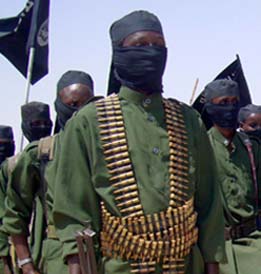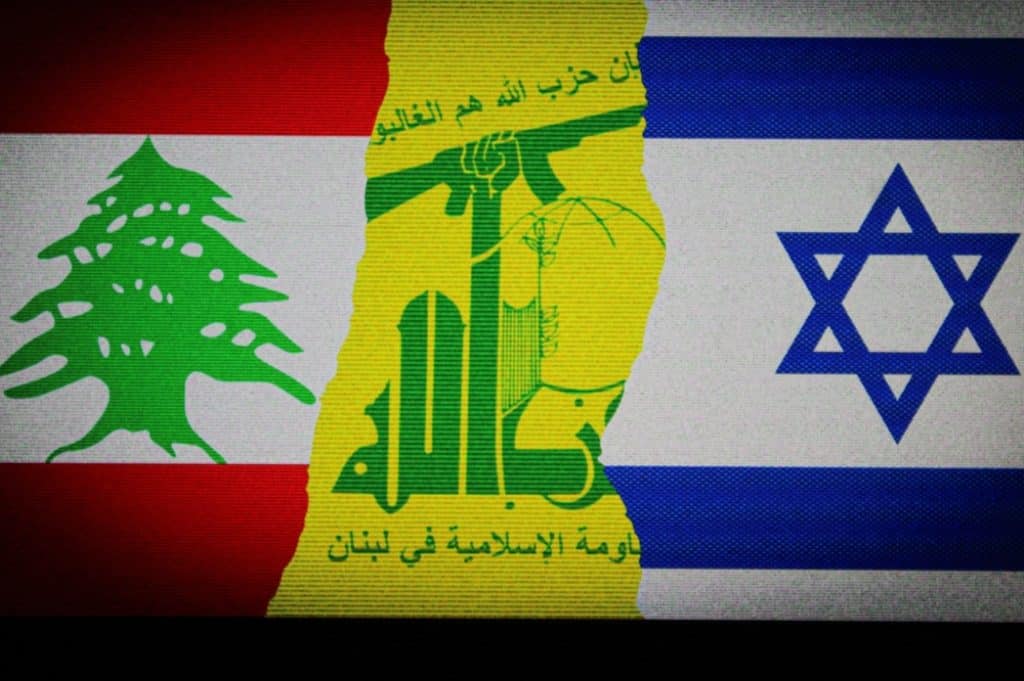
The Israel Defense Forces (IDF) conducted numerous activities and operations throughout Lebanon against Hezbollah between March 24 and 30, 2025.
On Friday, unknown actors again fired rockets at northern Israel from an area of south Lebanon where Hezbollah is dominant. While the rockets targeted Kiryat Shmona, sounding warning sirens in the area, one was intercepted in midair, and the other fell on Lebanese territory. In response, the IDF launched an extensive series of operations in Lebanon for the second week in a row, including striking a Hezbollah target in the Hadath neighborhood of south Beirut for the first time since the November 27 ceasefire went into effect.
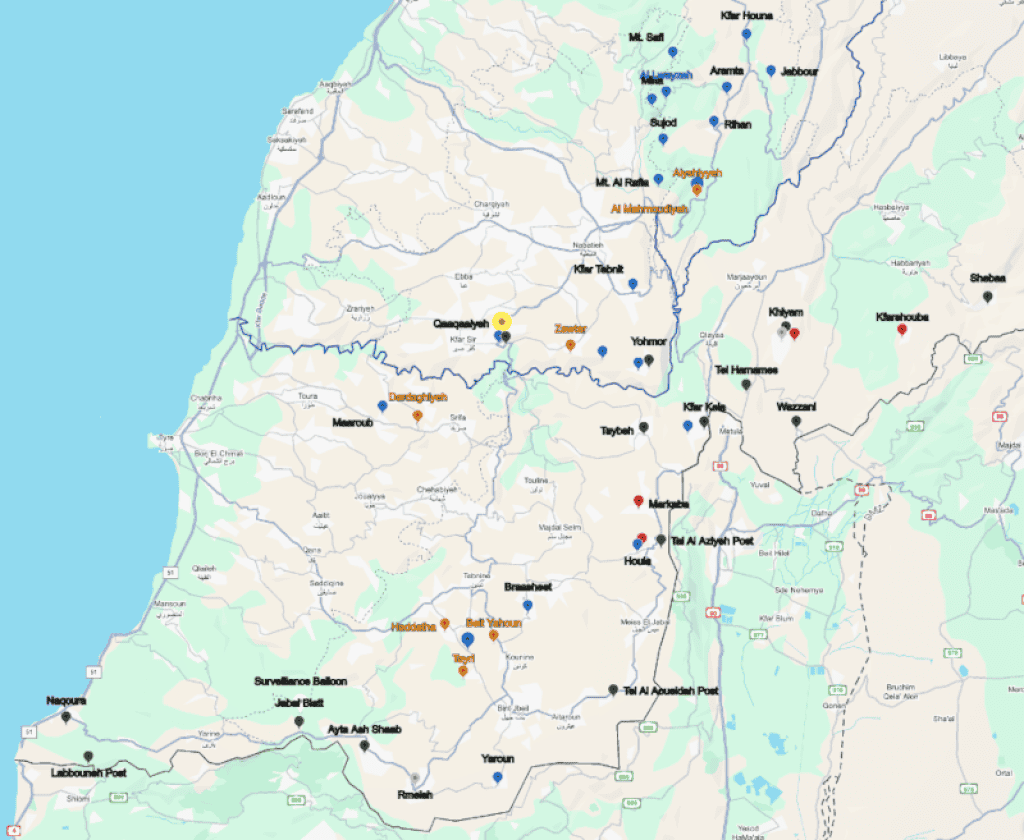
Lebanon’s posture on Hezbollah
Last week’s continued Israeli operations in Lebanon again highlight the Lebanese Armed Forces (LAF) and Lebanese state’s inaction against Hezbollah. Beirut’s official position is that it is fulfilling its responsibilities under the November 27 ceasefire terms and UN Security Council Resolution 1701. Simultaneously, Lebanese officials insist that disarming armed groups, including Hezbollah, will take more time and support for LAF. Nevertheless, they also stress that Israel’s operations inside Lebanon are unjustified, regardless of the continued presence and activities of armed groups and individuals, including Hezbollah.
Last week, Lebanese security sources speaking to Al Joumhouria denied Hezbollah’s responsibility for the March 22 rocket attack on northern Israel, despite admitting finding a Hezbollah flag and a picture of former Hezbollah Secretary-General Hassan Nasrallah near the launchers. Those sources insisted the attack was an Israeli “false flag” operation. Lebanese Finance Minister Yassine Jaber seconded this view, in part, during an interview with Al Arabiya. The LAF’s statement on Friday’s rocket fire echoed the position of Lebanese officials from last week, stating Israel was “using the excuse of two rockets fired from Lebanese territory” to attack Lebanon “in a blatant and repeat violation of Lebanon’s sovereignty.”
Lebanese President Joseph Aoun likewise said Israel’s actions in Lebanon, including its Friday strikes, were “unjustified” and quickly moved to exonerate Hezbollah of responsibility for the rocket fire, before LAF had located the launchers or investigated the incident.
Recent statements from several high-ranking Lebanese officials continue to demonstrate Beirut’s reluctance to act against Hezbollah. In a recent interview with Al Hurra, Deputy Prime Minister Tarek Mitri insisted on Lebanon’s commitment to monopolizing the possession of arms in the hands of the state:
The stance of the Lebanese government and all its members, and the parliament, which granted us its confidence with [a majority] 95 [of 128] votes … on the basis of what we declared in the policy statement … is that the state must assert its control over all its territory through the army and the lawful security agencies. We said it is the state’s right, indeed its obligation, to monopolize carrying arms … and the decision of war and peace. We said this all.
Nonetheless, Mitri offered caveats to this stance:
[However,] we did not say when and how we will accomplish all of this. Because enabling the security agencies is the precondition to beginning asserting the state’s control over all its territory, strengthening their capabilities. This hasn’t happened yet because the support the Lebanese Army receives—from the United States or other Western countries … remains limited.
Mitri agreed with his interviewer that this effort could take “many years.” He said, “We’re not going to have an army ten times its current strength,” and that in any case, the issue of disarming Hezbollah—though he didn’t explicitly name the group—”is primarily a political question, depending on us agreeing politically,” which he claimed was easier today than in the past. The question of Hezbollah’s arms, he said, would also be discussed as part of the government’s proposed national defense strategy. Mitri continued:
However, it’s impossible for us to have a timetable or to claim disarming Hezbollah by force during a [short] period … We are committed to enabling the Lebanese Army and security forces to carry out their duties completely by spreading their control over all Lebanese territory. But the means which the security agencies will use … are open to discussion. There’s no ready recipe for how to enact these principles upon which we agreed. These are dynamic matter. There’s a technical aspect related to the army’s strength. And there’s a political side connected to governmental consensus and gaining the support of a sufficient number of Lebanese. This isn’t the time to undertake uncalculated, risky moves that could set Lebanon years back.
When asked if any donor countries were preconditioning post-war reconstruction aid on disarming Hezbollah, Mitri said “no self-respecting state” would agree to such terms. He stated that foreign partners need to “understand that we cannot accomplish all we promised in the blink of an eye,” and Lebanon hoped its foreign partners wouldn’t create such a linkage. “We need some time … we will put all our commitments on the path to implementation. It could take months. It could take a year or two years to be fully implemented.” So, Mitri concluded, foreign countries should link aid to Lebanon to “beginning to seriously implement” its commitments, rather than full implementation.
Prime Minister Nawaf Salam took a firmer stance than his deputy in a subsequent interview with Al Arabiya, possibly cognizant of the criticism Mitri received over his Al Hurra interview. The premier insisted on the state’s monopoly on force, deciding war and peace, and controlling all its territory. “No one can go back to the Army, People, Resistance equation,” which granted Hezbollah a degree of legal imprimatur to maintain its private arsenal, Salam said. He insisted this was part of the past, and all his ministers were likewise committed to these principles. “All are headed in this direction,” he said. However, Salam included his own caveat, saying that his cabinet’s members were “doing so at different speeds.”
The prime minister was attempting to explain the apparent opposition of some of his ministers to his stance. Days before Salam’s Al Arabiya interview, Environment Minister Tamara Al Zein expressed her opposition to disarming Hezbollah by force or on a fixed timetable. Zein also insisted that the fate of the group’s arms north of the Litani River would be decided by dialogue and consensus as part of a national defense strategy. Finally, she alleged the cabinet policy statement’s clause “affirming Lebanon’s right to self-defense in case of any aggression pursuant to the Charter of the United Nations” could be used to justify armed resistance.
However, Mohammad Raad, who heads Hezbollah’s Loyalty to the Resistance parliamentary bloc, found this flexible stance by the Lebanese government objectionable. The Loyalty to the Resistance bloc granted Salam, his cabinet, and its policy statement a vote of confidence on February 26. During Raad’s Quds Day speech at the Iranian Embassy in Beirut, he said:
Whoever claims, in our country, that they alone possess the decision of war and peace or seeks the exclusivity of this decision in the hands of the state or any other party, avoids reality and truth. Because the Zionist enemy, in our days, is alone who launches wars and continues aggression and occupation. The state alone lacks the ability to defend its country or protect its people. … To whomever is led by their delusions into thinking that the resistance is part of the past and that its tripartite equation [of Army, People, Resistance] is over and can never return—I advise them to be wary of being drunk on temporary power. For governments, normally, are the ones that become part of the past. But the equations that the martyrs set with their pure blood and the loftiness of their sacrifices are immortalized until even after the end of history.
Summary of Israeli Operations Against Hezbollah, March 24-March 30
The Israel Defense Forces targeted 29 Lebanese locales over the week, all in south Lebanon except for an airstrike in the Hadath neighborhood of south Beirut. Twenty-one areas were hit by airstrikes, artillery targeted nine others, and four areas witnessed IDF ground operations. The IDF targeted Hezbollah military infrastructure, rocket launchers, and operatives—including targeted assassinations—throughout Lebanon. During its wave of strikes on Friday, the IDF also struck a Hezbollah drone-storage facility in Hadath.
Mount Lebanon Governorate
- Baabda District: Hadath
Nabatieh Governorate
- Bint Jbeil District: Ayta Ash Shaab, Beit Yahoun-Haddatha-Tayri, Braasheet, Rmeish, Yaroun
- Hasbaya District: Kfarshouba, Shebaa
- Marjayoun District: Houla, Kfar Kela, Khiyam, Markaba, Taybeh, Wazzani.
- Nabatieh District: Kfar Tebnit, Mlita, Mount Al Rafia, Qaaqaaiyeh, Yohmor.
South Lebanon Governorate
- Jezzine District: Aiyshiyyeh-Mahmoudiyeh, Aramta, Jabbour Pond, Kfar Houna, Al Lwayzeh, Mount Safi, Rihan, Sujod.
- Tyre District: Maaroub, Naqoura
Total Lebanese casualties from the Israeli operations, per the Lebanese Health Ministry, tallied up to 12 or 13 people killed, including seven to eight Hezbollah operatives, and 19 to 22 wounded.
- March 24, 2025: 1 Hezbollah operative killed
- March 25, 2025: No casualties reported
- March 26, 2025: N/A
- March 27, 2025: Six Hezbollah operatives killed, another possibly only wounded
- March 28, 2025: Five people killed, eighteen to twenty wounded
- March 29, 2025: No casualties reported
- March 30, 2025: No casualties reported
Chronology of Israeli operations against Hezbollah: March 24-March 30
March 24
- At 3:32 pm, NNA Lebanon reported an Israeli artillery strike on the outskirts of the village of Shebaa in the Nabatieh Governorate’s Hasbaya District, approximately 2.5 kilometers from the Blue Line. The IDF did not comment on the incident.
- NNA Lebanon reported that at approximately 11:20 pm, an Israeli drone fired a missile at a vehicle near the Husseiniyeh (Shiite religious community center) of the town of Qaaqaaiyeh in the Nabatieh District of the Nabatieh Governorate. One unidentified casualty was reported. The next day, the IDF announced the target of the strike was Hasan Kamal Halawi, whose nom de guerrewas Osama, the commander of Hezbollah’s “southern front” anti-tank forces. The IDF’s statement said, “During the war, Halawi advanced several terrorist plots against the State of Israel, was responsible for transporting operatives, and for obtaining arms for the organization in south Lebanon.” The statement noted that “in recent months, Halawi has continued to advance terrorist plots against the Israeli Home Front.” While official Hezbollah outlets have yet to confirm his death, municipal social media accounts confirmed his death and affiliation with the group.

March 25
- At 7:27 pm, NNA Lebanon reported that Israeli forces were firing flares in the western sector of the frontier between Israel and Lebanon, particularly over the village of Rmeish.
March 27
- At 12:27 am, Lebanese media outlets reported an Israeli airstrike on a car on the outskirts of Maaroub in the South Lebanon Governorate’s Tyre District. NNA Lebanon reported that one person was killed and another was wounded. Official Hezbollah or Hezbollah-linked channels have yet to identify the strike’s casualty. However, several social media accounts identifiedHezbollahoperative Hassan Neemeh Sabra, who was born in Qantara but residing in Maaroub’s neighboring Srifa—as the target. However, the IDF later stated that its strike, directed by the 91st Division, assassinated Hezbollah Radwan Force battalion commander Ahmad Adnan Bjayjeh and placed the location of the strike in Dardaghiyeh, just east of Maaroub. The IDF’s statement noted that, in addition to directing operations against “the citizens of the State of Israel and the IDF” during the recent war, “in recent months, [Bjayjeh] continued to work on promoting terror activities against the Israeli Home Front and posed a threat to the State of Israel and its citizens.” Bjayjeh was the nephew of Hezbollah commander Abu Hassan Bjayjeh. Sabra’s fate remains unknown.

- NNA Lebanon reported that at 7:15 am, Israeli artillery shelled the Debsh neighborhood of Yohmor in the Nabatieh Governorate’s Nabatieh District. The IDF later commented it was targeting “several Hezbollah terrorists identified transferring weapons near Yohmor.” At 8:44 am, while artillery shelling was ongoing, NNA Lebanon reported an Israeli drone targeted a vehicle in the same area of Yohmor. Social media accounts sympathetic to Hezbollah said three Hezbollah operatives were killed in the Israeli operations in Yohmor: Hussain Ali Hallal from Deir Al Zahrani, and Fawzat Noureddine and Mohammad Sultan from Kfarreman.
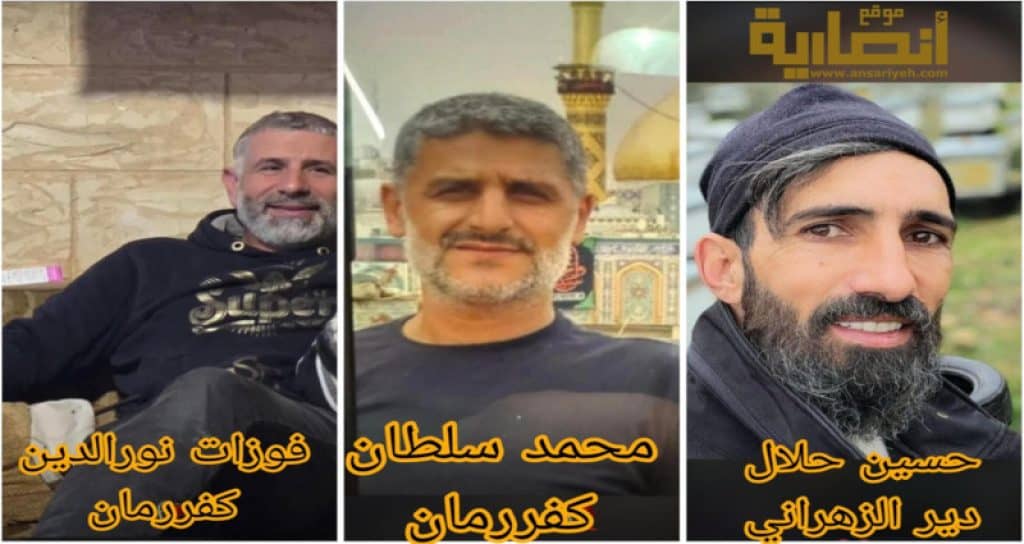
- At 12:49 pm, NNA Lebanon reported that an Israeli drone dropped an explosive in the town of Houla in the Nabatieh Governorate’s Marjayoun District, wounding one unidentified individual.
- 5:10 pm, Lebanese media outlets reported that an Israeli drone targeted a vehicle in Braasheet in the Nabatieh Governorate’s Bint Jbeil District. The Lebanese Health Ministry said two individuals were killed. The IDF’s brief statement at 6:16 pm said it had “attacked two terrorists from the terror organization Hezbollah operating near Braasheet in south Lebanon” without elaborating. Hezbollah-linked channels have yet to identify the fatalities. However, personal social media accountsidentifiedthem as Ahmad Mohammad Abuzeid, whose nom de guerre is Gharib Al Zahraa, from the town of Jarjouaa in south Lebanon, and Maher Taan Kalakesh, whose nom de guerre is Ammar Hammoud, from the town of Shaqra.
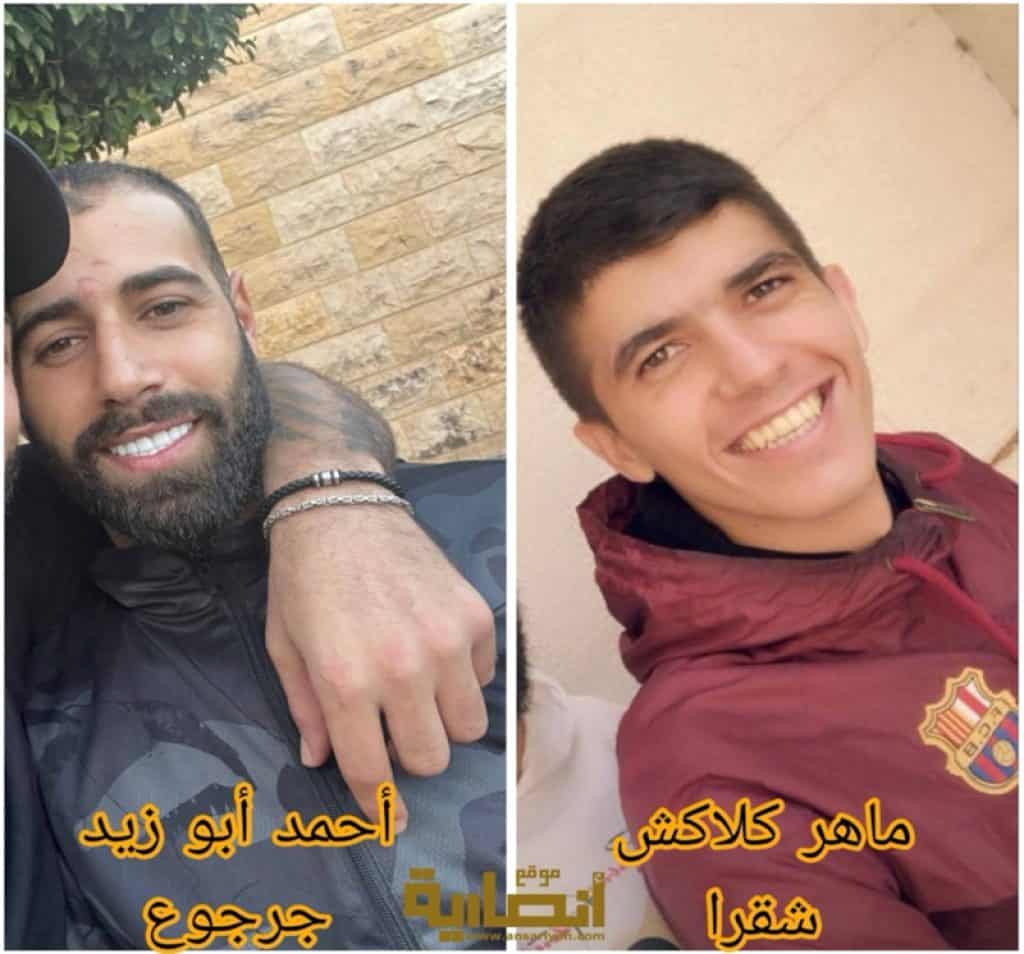
March 28
Note on times: On March 28 at 2:00 am, Israel set its clock forward for daylight saving time and is currently running on GMT+3 Time. Lebanon has yet to do so and is still running on GMT+2. Events are listed sequentially in order of occurrence, but time stamps are based on the country where the event occurred.
- At 7:50 am, Red Alert rocket warning sirens sounded in northern Israel’s Margaliot, Misgav Am, Kiryat Shmona, and Tel Hai near the frontier line with Lebanon. Two rockets had been fired from Lebanon—one intercepted in midair and the other landing in Lebanese territory. No casualties or property damage were reported inside Israel. It was the first time Red Alert sirens sounded in Kiryat Shmona in three months.
- NNA Lebanon reported that at approximately 7:20 am, heavy Israeli artillery bombardment targeted the outskirts of Qaayqaaiyeh in the Nabatieh Governorate’s Nabatieh District, toward the side facing the Litani River.
- At 8:03 am, NNA Lebanon reported Israeli artillery and smokescreen shelling on the village of Khiyam in the Nabatieh Governorate’s Marjayoun District. The artillery targeted Khiyam’s Birkeh neighborhood, igniting fires in a house and the public school. The smokescreen shells targeted Khiyam’s public square, Al Husseini Club, and eastern neighborhood. Israeli forces at the Tel Hamames outpost also targeted Khiyam with gunfire and Israeli artillery targeted nearby Kfar Kela.
- At 8:08 am, NNA Lebanon reported an Israeli artillery strike on Taybeh in the Nabatieh Governorate’s Marjayoun District.
- At 8:15 am, NNA Lebanon reported that Israeli forces used stun grenades in Markaba in the Nabatieh Governorate’s Marjayoun District to disperse congregated crowds. No injuries were reported.
- At 8:30 am, NNA Lebanon reported that Israeli artillery shelled Qaaqaaiyeh and the outskirts of Yohmor in the Nabatieh Governorate’s Nabatieh District.
- NNA Lebanon reported that at approximately 8:45 am, Israeli forces launched grenades at a cafe in the middle of the village of Houla, which had also been targeted the day prior, and another grenade near an inhabited house by the police station. An Israeli drone subsequently dropped explosives on two houses in Houla and destroyed them.
- At 10:06 am, schools were dismissed in the city of Tyre in the South Lebanon Governorate’s Tyre District due to the security escalation.
- At 10:21 am, an unnamed “official source in Hezbollah” was quoted in the group’s newspaper Al Ahed denying Hezbollah’s responsibility for the rockets fired “at northern occupied Palestine [Israel].” The source stressed the group’s commitment to the ceasefire deal. The source also said that “these incidents,” referring to the rockets fired at Israel that day and last week, “are part of creating suspicious excuses for the continuation of the Israeli aggression against Lebanon.” Hezbollah has yet to issue an official denial of its responsibility for the rocket fire.
- At 10:26 am, NNA Lebanon reported Israeli artillery shelling on the outskirts of Naqoura in the South Lebanon Governorate’s Tyre District and Ayta Ash Shaab in the Nabatieh Governorate’s Bint Jbeil District.
- At 11:55 am, the IDF announced that it had started targeting Hezbollah positions inside Lebanon.
- NNA Lebanon reported that at 10:55 am, Israeli airstrikes targeted the area between Zawtar and Yohmor in the Nabatieh Governorate’s Nabatieh District. It was followed by an airstrike in Sujod.
- At 11:18 am, NNA Lebanon reported a series of Israeli airstrikes on Kfar Houna, Rihan-Jabbour, Aramta, Al Lwayzeh, and Sujod in the South Lebanon Governorate’s Jezzine District. Israel also launched three airstrikes on Yohmor, one of which destroyed a house but caused no casualties, and Mount Al Rafia in the Nabatieh District.
- At 11:33 am, NNA Lebanon reported an Israeli airstrike on Mount Safi in the South Lebanon Governorate’s Jezzine District.
- At 11:49 am, NNA Lebanon reported a second Israeli airstrike on Jabbour Pond. In January 2024, the IDF bombed a Hezbollah airstrip in the area of Jabbour Pond used to launch drones.
- At 12:00 pm, NNA Lebanon reported that an Israeli airstrike targeted and destroyed the villa of retired Internal Security Forces Captain Ali Sharafeddine in Kfar Tebnit in the Nabatieh Governorate’s Nabatieh District, near the municipal building. The strike killed three people, including Sharefeddine, his wife Shadia Bdeir, and another woman named Fatima Haydar. The strike wounded 15 to 18 others, including three children and eight women, according to the Lebanese Health Ministry.
- At 1:20 pm, the IDF’s Arabic Spokesman Avichay Adraee issued a warning to the residents of Dahiyeh—the southern suburbs of Beirut that serve as a Hezbollah stronghold—of an incoming strike on a specific building in the area’s Hadath neighborhood. Adraee stated residents should remain at least 300 meters from the targeted area.

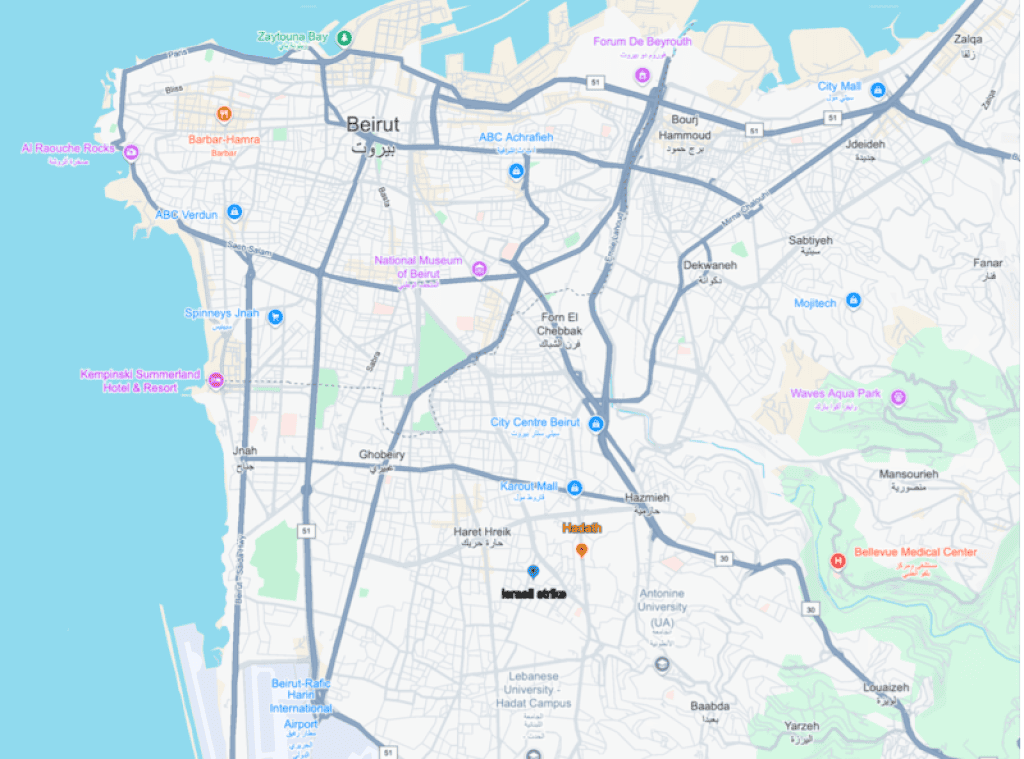
- At 12:25 pm, in response to Adraee’s warnings, Lebanese Education Minister Rima Karami canceled classes and ordered evacuations of Lebanese University’s Hadath Campus and all public, private, and vocational schools in the Hadath area.
- At 12:55 pm, NNA Lebanon reported the Israel Air Force conducted a warning airstrike in Dahiyeh’s Hadath neighborhood – a practice the IDF calls “knocking on the roof” by dropping a non-explosive or low-device on the roof of a targeted civilian building to war its occupants of an imminent airstrike.
- At 1:14 pm, NNA Lebanon reported a second Israeli warning of an airstrike in Dahiyeh’s Hadath neighborhood.
- At 1:19 pm, Mohammad Raad, the head of Hezbollah’s Loyalty to the Resistance parliamentary bloc, insisted that Hezbollah “agreed to the ceasefire [and] remains committed to it and will not violate it” and called on “the [Lebanese] state to carry out its duties and deter” Israel.
- At 1:43 pm, NNA Lebanon reported a third Israeli warning of an airstrike in Dahiyeh’s Hadath neighborhood.
- At 1:52 pm, NNA Lebanon reported that an Israeli airstrike targeted and destroyed the highlighted building and an adjacent structure in Dahiyeh’s Hadath neighborhood. It was the first Israeli action in the area since the November 27 ceasefire deal.
- At 2:53 pm, the IDF released a statement on its strike in Dahiyeh, saying it had targeted “infrastructure used to store drones used by the terror organization Hezbollah’s aerial unit (Unit 127).”
- At 2:21 pm, Hezbollah’s Media Relations office issued an official statement canceling Quds Day events in Dahiyeh due to Israeli strikes in the area.
- At 1:40 pm in France, Lebanese President Joseph Aoun, in a joint press conference with his French counterpart Emmanuel Macron in Paris, insisted Hezbollah was not responsible for the rockets fired at Israel that morning. “Prior experience and the evidence on the ground indicate this wasn’t Hezbollah, and Hezbollah is not responsible,” Aoun said.
- NNA Lebanon reported that at approximately 2:45 pm, Israeli airstrikes targeted the forested area between Mahmoudiyeh and Aiyshiyyeh in the South Lebanon Governorate’s Jezzine District, intermittent artillery shelling on Yohmor, and an airstrike on the outskirts of Kfar Houna.
- At 2:56 pm, the LAF issued a statement claiming it had located the launchers used to fire rockets at northern Israel. The statement, which echoed the earlier one issued by an unnamed Hezbollah source, accused Israel of “using the excuse of two rockets fired from Lebanese territory towards the occupied Palestinian lands [Israel]” to attack Lebanon. The statement said the LAF had successfully located the launch site of the two rockets in Qaayaayieh and stressed that this area is “north of the Litani,” which suggests the rockets’ presence was not a direct violation of the November 27 ceasefire between Lebanon and Israel. The LAF said it had “begun investigations to determine the identity” of the party responsible for launching the rockets.
- At 3:33 pm, NNA Lebanon reported Israeli artillery shelling on the outskirts of Yohmor in the Nabatieh Governorate’s Nabatieh District.
- NNA Lebanon reported that at approximately 3:45 pm, an Israeli airstrike targeted the road to the Litani River in Yohmor, killing two individuals, Ashraf Al Mohammad and Abdallah Al Mohammad.
- NNA Lebanon reported that at approximately 4:15 pm, an Israeli airstrike targeted Mlita in the Nabatieh Governorate’s Nabatieh District.
- At 4:28 pm, NNA Lebanon reported a third Israeli airstrike on Jabbour Pond.
- At 4:58 pm, NNA Lebanon reported an Israeli airstrike between the towns of Beit Yahoun, Haddatha, and Tayri in the Nabatieh Governorate’s Bint Jbeil District. The strike wounded two people.
- At 5:01 pm, NNA Lebanon reported that Israeli forces had launched a surveillance device over western and central villages of south Lebanon adjacent to the Lebanon-Israel frontier.
- At 6:55 pm, NNA Lebanon reported that an Israeli drone dropped an explosive on a building in Yaroun in the Nabatieh Governorate’s Bint Jbeil District.
- At 7:33 pm, NNA Lebanon reported that Israeli forces fired flares over the western and central sector’s villages on the Lebanon-Israel frontier.
- At 8:23 pm, NNA Lebanon reported that an Israeli drone dropped a stun explosive in Kfar Kela in the Nabatieh Governorate’s Marjayoun District.
March 29
- At 12:02 pm, NNA Lebanon reported that an Israeli drone dropped stun grenades to disperse crowds in Yaroun in the Nabatieh Governorate’s Bint Jbeil District.
- At 3:52 pm, NNA Lebanon reported that Israeli troops directed heavy gunfire at the eastern neighborhood of Kfarshouba—facing the Israeli side of the Blue Line—damaging several houses and vehicles.
March 30
- At 4:42 pm, NNA Lebanon reported that an Israeli drone dropped a stun explosive in Houla to disperse crowds.
- At 4:45 pm, NNA Lebanon reported that Israeli artillery targeted an orchard on the outskirts of Wazzani in the Nabatieh Governorate’s Marjayoun District.
- At 9:30 pm, NNA Lebanon reported that Lebanese General Security arrested two suspects behind Friday’s rocket fire at Israel. Security sources later gave Al Arabiya what appeared to be an updated number, saying there were four detainees—two Palestinians and two Syrians.

